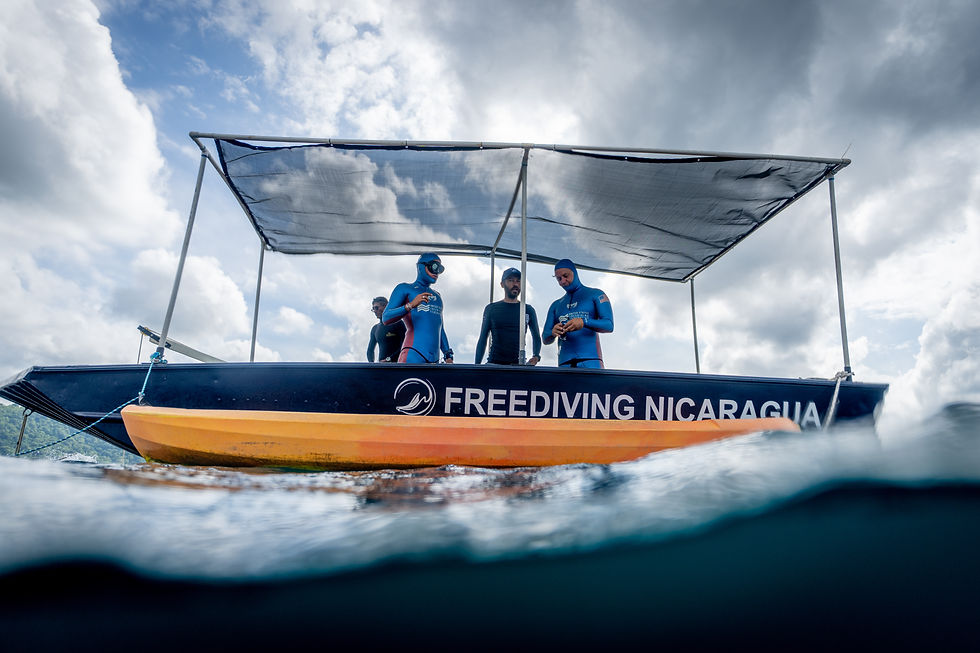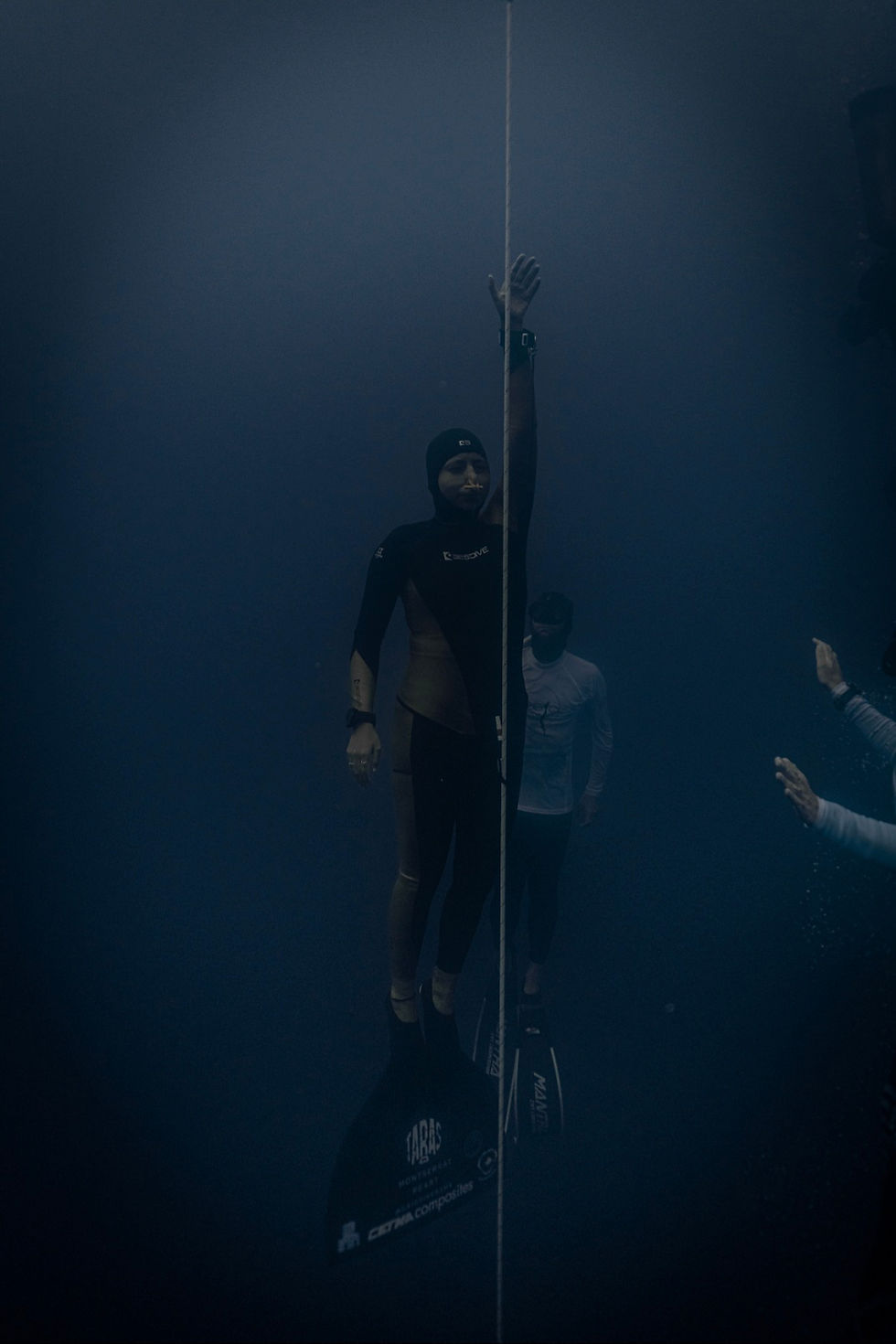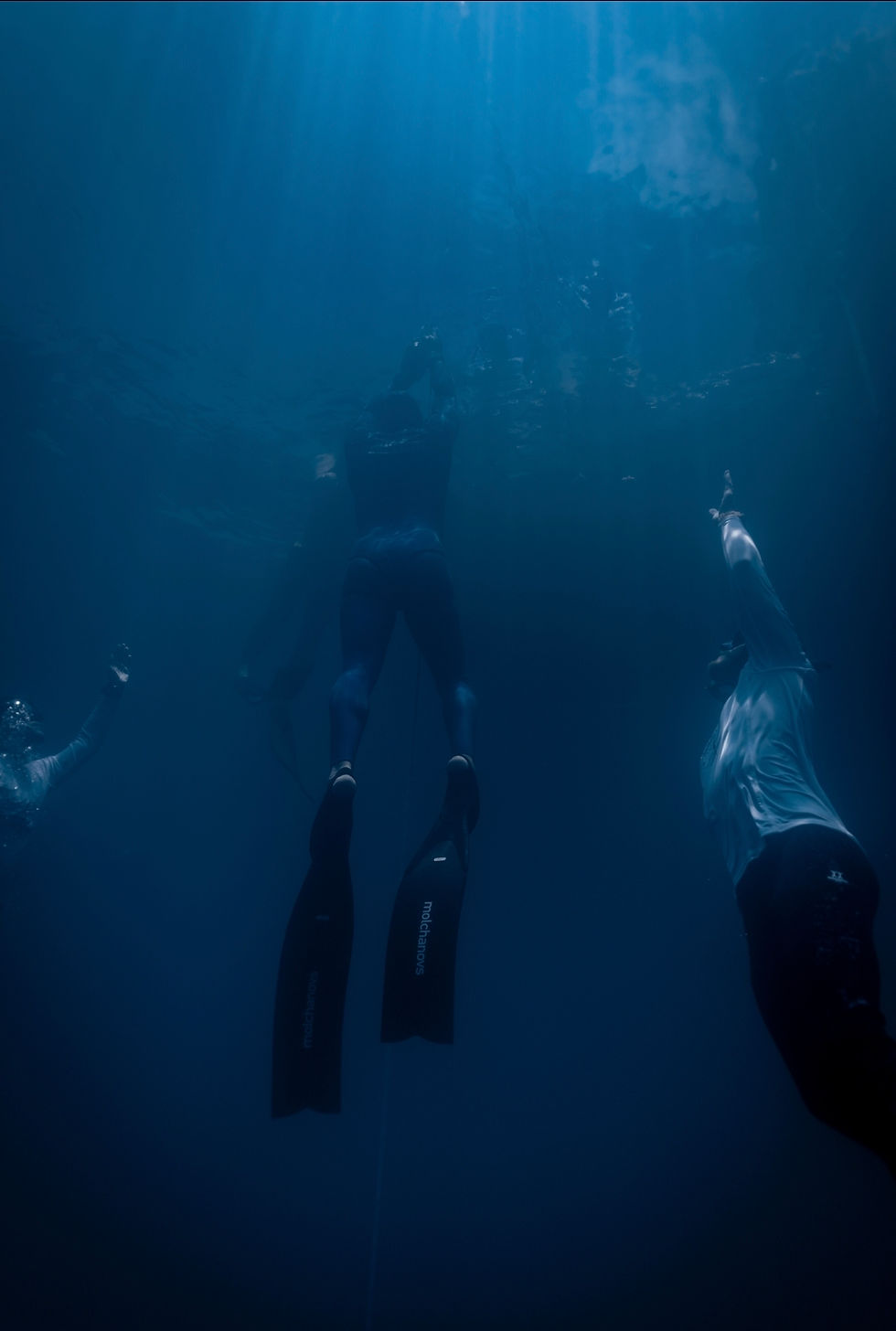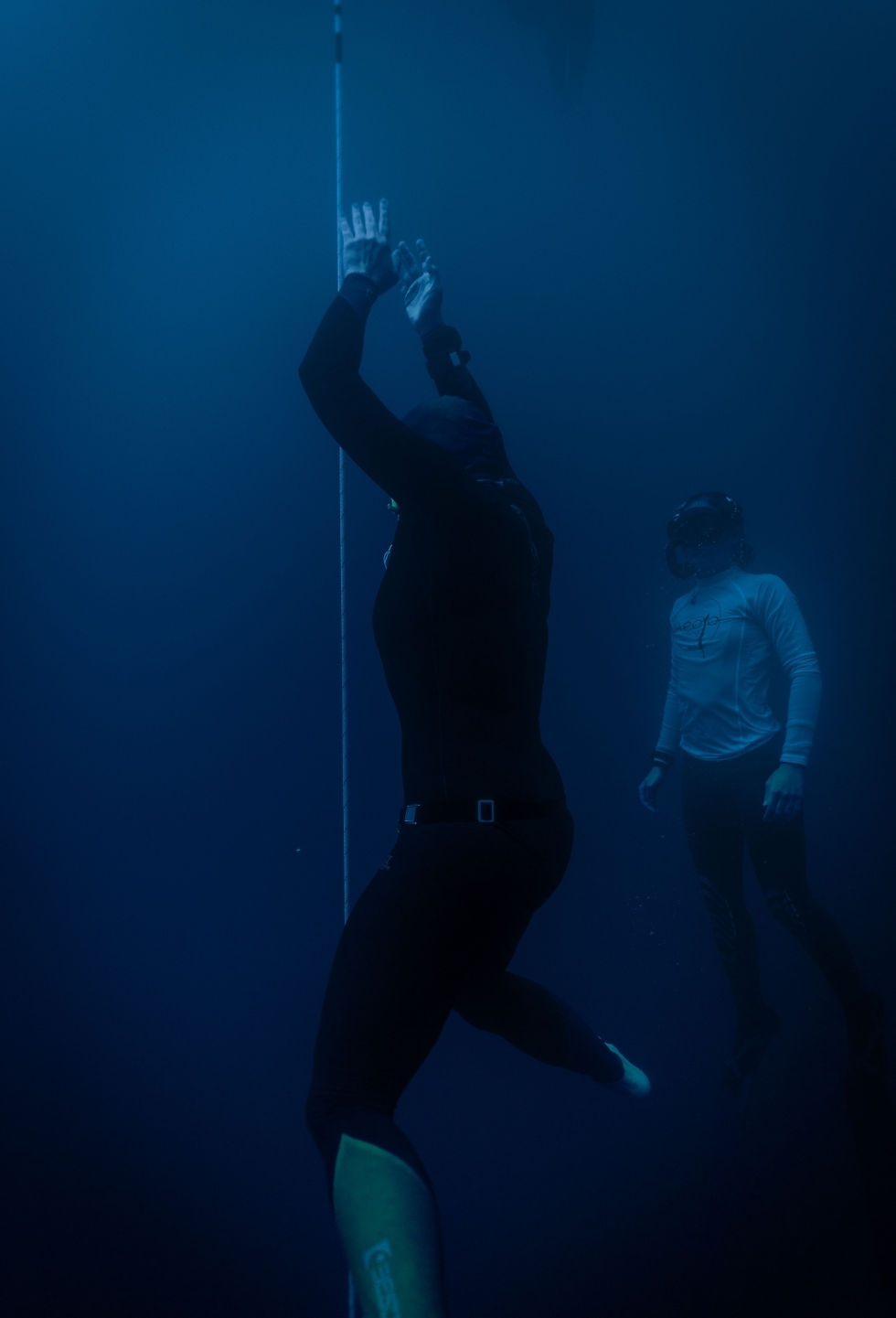Day 2.5 - The Obstacle Is the Way
- Sam Harrison
- Aug 19
- 4 min read
What is an obstacle?
A thing that hinders progress? Slows us down? Tries to make us give up?
Freedivers develop a unique relationship with obstacles. To us, the obstacle isn’t something in the way—it is the way. It’s the resistance that builds strength, the test that reveals character, the friction that sparks growth.
And this week, it wasn’t just the athletes facing challenges. The event itself had to adapt to one: the unexpected loss of a motor.
---
A Challenge Arises
Day 2 started like a dream. The water was calm, the line was clean, and dives were solid. But after the first group finished and returned to shore, word came down the chain: the motor was out.

And not just any motor—the one responsible for:
Shuttling athletes
Transporting the safety team
Towing the platform to and from the dive site
That left one solution: the safety team swam—just under 1.5 kilometers.
Honestly? We call that a bonus training session. Free leg day.
No complaints. No hesitation.
Because no one on this team is backing down.
The next morning, we rowed. Literally.
With athletes, safeties, and a can-do attitude, we pushed across the crater—wind in our faces, oars in hand—and got the session done. The result?
3 personal bests, 1 national record, and a much easier row back, thanks to a tailwind.
---
Why We Tell This Story
Some might say, “Shouldn’t we keep this kind of hiccup quiet?”
No. In fact, it’s the most important thing to tell. Because this isn’t just a competition—it’s a living, breathing testament to grit, adaptability, and the pursuit of mastery.
This isn’t a pickup game on a football field.
This is where history is written.
The athletes competing here have flown across borders to test their limits in one of the most pristine freediving environments on the planet. The names etched in the results of this competition will go on to define the early legacy of a still-niche, fast-growing sport.
Remember:
30 years ago, mountain biking was a sport for adrenaline junkies with duct tape and denim.
Now? It’s global, competitive, and fully professionalized.
Freediving is next—and the pioneers are already here.
---
Location, Rules, and the Long Game
The Laguna de Apoyo is perfect for depth diving—crystal-clear volcanic water, sheltered conditions, dramatic drop-offs. But it’s also a protected natural reserve.
That means no gas-powered motors, only electric allowed.
And getting an electric motor, plus the correct battery system, into a volcanic crater in rural Nicaragua? Not so easy. Event director Thomas Dedes has spent months ordering parts, importing gear, flying in technicians—yet the challenge continues.
So we do what freedivers do best:
Adapt. Endure. Evolve.
Three options:
1. Give up (never)
2. Complain (pointless)
3. Dig deep and go all in (obviously)
We choose option 3.
---
Freediving Disciplines Explained
Now that is out of the way, let's chat about the depth disciplines! Whether you're new to freediving or just need a refresher, here’s a breakdown of the four AIDA depth disciplines featured in this event:
---
1. Free Immersion (FIM)
No fins. No kicking. Just hands and rope.

Divers use arm pulls on the vertical line to descend and ascend. It’s a discipline of rhythm, control, and upper body endurance.
Ideal for equalization work and technique refinement.
Why athletes love it:
It removes propulsion from the equation—so you can focus fully on relaxation and technique.
---
2. Constant Weight Monofin (CWT)
One large monofin. One fluid movement.

The diver descends and ascends using a dolphin kick, without touching the line except to turn at the bottom.
“Constant weight” means you must return with the same equipment and ballast you started with.
Why athletes love it:
Maximum depth potential. This is the fastest, most hydrodynamic way to travel—and where world records are often set.
---
3. Constant Weight Bi-Fins (CWT-B)
Two fins, constant load, all about power and precision.

Like CWT, but using traditional bi-fins (usually high-performance carbon). The diver swims down and back up with flutter kicks, without pulling the rope or dropping weights.
Why athletes love it:
It’s the discipline most similar to recreational diving. It demands excellent technique and leg endurance—and it’s surprisingly hard to master efficiently.
---
4. Constant Weight No Fins (CNF)
No fins. No rope. Just you.

Divers use a modified breaststroke to descend and ascend. No propulsion equipment allowed—only hands and legs, and the rope is only used for orientation.
Why athletes fear it:
It’s often considered the most brutal and technically demanding discipline.
Why they love it:
Pure freedom, pure challenge, and pure pride when you get it right.
---
How the Scoring Works
This competition uses a blended point system that allows male and female athletes to compete on the same leaderboard.
Here’s the formula:
Points = (Athlete's Depth) ÷ (AIDA World Record for Gender and Discipline) × 100
This means:
Everyone is compared against the best in their category.
Your best dive per discipline counts toward your final score.
Athletes can dive up to 6 times: 4 optional disciplines + 2 optional retries or deeper attempts.
---
What’s Next?
Tomorrow is Day 3.
We’re rested. We’re fueled.
And we’re going to row, tow, and dive our way into the next chapter of this story.
Come hell or high water—
hopefully just high water.
See you at the line.
.png)





Comments